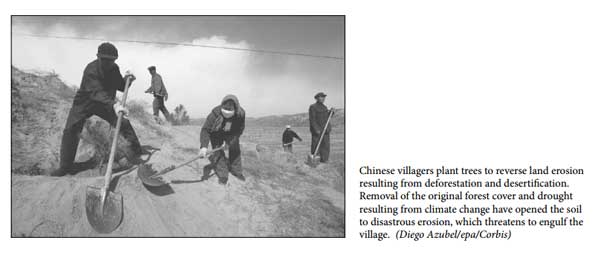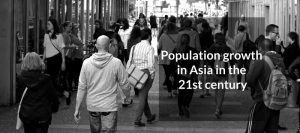The problems relating to population growth discussed above are serious enough, but the steep rise in all forms of environmental pollution, flowing from economic growth and technological change, is equally or even more alarming. It is not easy to be optimistic about the future in such terms.
Anyone who has visited Seoul, Taipei, Hong Kong, Jakarta, Bangkok, or any of the cities of China or India recently can give a graphic description of the choking clouds of exhaust and the general atmospheric pollution that hang like a pall over nearly all Asian urban areas, as well as the constant din and fearsome congestion of motorized traffic, from scooters to cars to buses and trucks.
China has become the world’s biggest market for private cars, and it makes heavy use of soft coal as industrial and household fuel. Outside of Japan, South Korea, Hong Kong, Taiwan, and Singapore, bicycles outnumbered motor vehicles until very recently, as they used to in China. But as economic growth proceeds, the internal combustion engine increasingly takes over and makes a more and more major contribution to dangerous air pollution, as it has long done in the “developed,” or rich, countries.
Americans were the first to be enslaved by the private car; as affluence has spread, even in poor countries like India, Indonesia, or the Philippines, private-car ownership has mushroomed and has become an urban plague as well as a serious health menace.
Now China has begun to join this trend as incomes have risen for many and a number of new factories have been built to produce cars as well as trucks. But what will crowded China be like with hundreds of millions of private cars? There are, of course, far better ways to deal with urban transport needs—better in that they are much more effective and faster as well as very much cheaper and less polluting—mainly subways and electric streetcars or buses.
But the newly affluent everywhere prefer the personal convenience and ego-building of a private car, however inefficient and antisocial. For them, as for most Americans, the car is a status symbol and an amusing toy. Its rise brings with it horrendous problems. Far from improving the quality of life in most Asian cities, the spread of the private car has greatly worsened it and threatens also to shorten it.

Equally serious is the pollution caused by industry, especially where it uses chemicals or large amounts of coal or oil, with wastes discharged both into the atmosphere and into water bodies. The “yellow dragon” of sulfurous smoke and haze produced from burning fossil fuels, mainly soft coal, that hangs over Chinese cities is duplicated in most urban areas outside Japan. In most Asian cities outside the charmed circle of the high-income countries, the water is also unsafe to drink and contains varying amounts of chemical toxins and heavy metals that have seeped into the water table or have been discharged into rivers or lakes.
Piped water supplies, however unfit to drink, cannot keep up with booming urban populations, and taps often give out nothing but air or a rusty sludge. Water pollution, at least as menacing to human welfare as air pollution, is clearly the result of industrialization and especially of the use of chemicals and synthetics in many manufacturing processes. Here too economic development exacts a heavy price. And with growing concerns over the disastrous consequences of global warming, Asia’s pollution crises have become everyone’s problems.
Poisoned as they are, water tables in many large urban areas have been dangerously drawn down, and surface water bodies cannot keep up with surging demand for both industrial and household uses. The biggest cities compete with each other, and with smaller ones, in tapping more distant rivers to feed their water supply systems.
The Chinese government is pursuing an ambitious and risky plan to divert rivers in central China up to northern China, the region with the greatest water deficiencies. The costs for the environment and to the many people who are being relocated out of the way of the project are incalculable. In most cities outside the rich Asian countries—still the great majority—most households must draw and carry their water from an undependable tap or pump shared by many others in a courtyard or at the end of a lane.
Urban housing is desperately inadequate in both quantity and quality, and the makeshift huts or tents of squatter colonies, in addition to clouds of street people and beggars, clutter the urban landscape. Despite all of these dismaying problems, people continue to flock to the cities from the countryside in search of wider economic opportunity.




